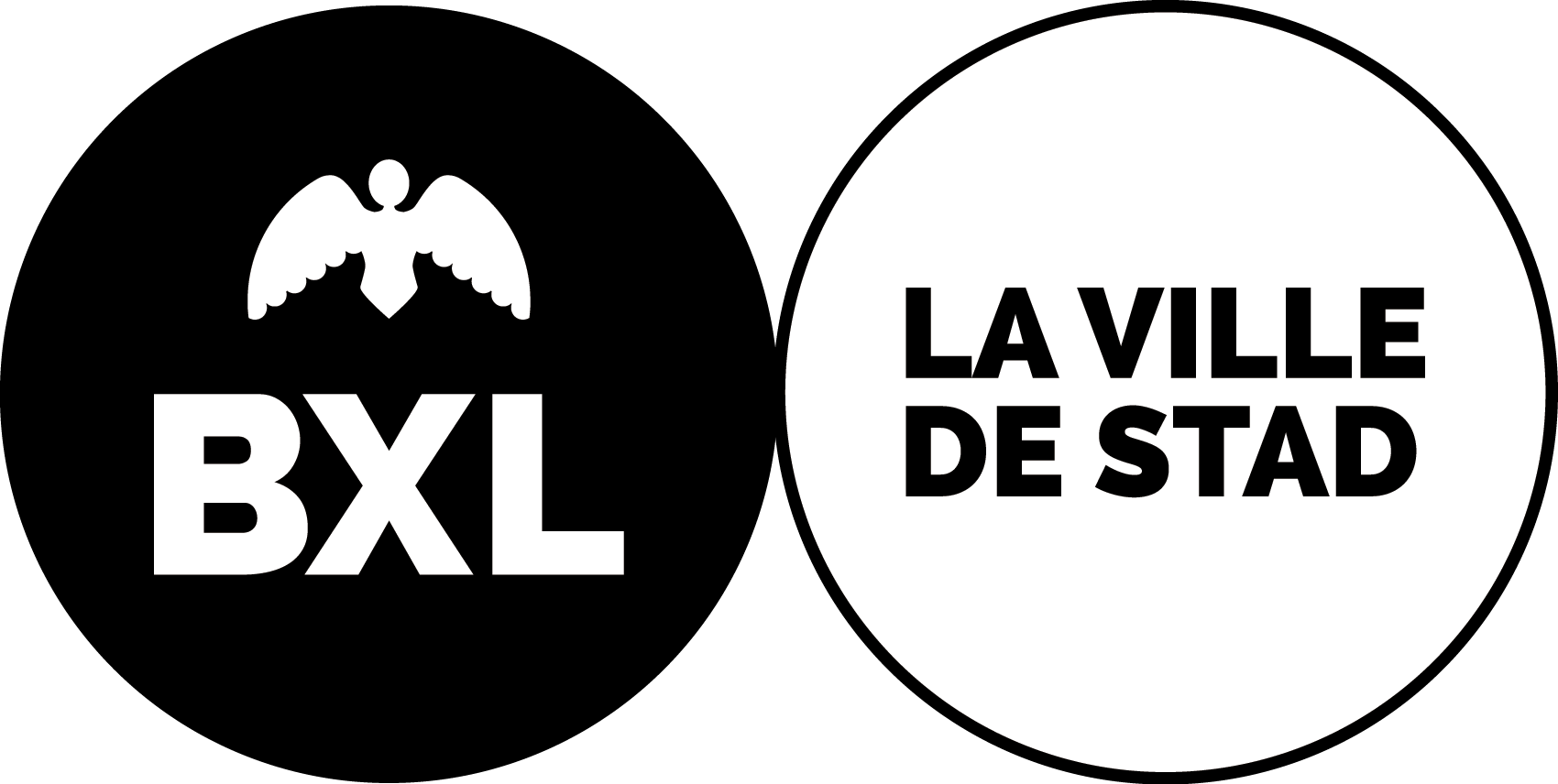Paintings on display: manifestations of the pictorial tradition in Belgian video in the seventies.
The aim of this article is to understand how the video medium, when it was introduced on the Belgian scene, was used by visual artists to construct a discourse on the pictorial tradition. The latter manifests itself on screen in different ways, ranging from its physical deconstruction to historical reinterpretation or contextualisation. Our analysis will focus on video creations from the 1970s, with a particular interest in Jacques Lennep’s tapes La peinture moderne (1974-1975) and Le tableau (1974-1975), Hugo Duchateau’s Relations (1975) and Leo Copers’ installation Mona Lisa, Mona Leo (1974-1975). Each of these works brought together two modes of representation: painting and video. However, they rarely explored the visual or formal properties of video. There was no mixing of images, inlays or other tricks to experiment with the layers of the image. These creations had a raw character typical of amateur practice. The context in which they were produced and the careers of the artists presented here are decisive in this respect. In the 1970s, video was still in its infancy in Belgium. The artists turned to this new medium spontaneously, often in response to an invitation from a third party who had already been initiated, and without yet having either the hindsight or the technical means to really question the notion of video. These first attempts were closer to a video-performance reproducing ideas already explored with other techniques. The artists put themselves on stage in front of the camera, which became the privileged witness of a game of demystification that opened up new artistic interpretations.
At the turn of the 1970s, the art world in Europe and the United States was in turmoil. Art institutions were being strongly contested and the boundaries between disciplines were being profoundly challenged. Numerous artists’ collectives and groups were emerging and working towards new modes of creation. The artistic emulation that characterised this period was accompanied by a discourse on how the pictorial tradition was losing its central role. The rise of conceptual art refocused artistic research towards processes and ideas. Performance art, combined with the new possibility of recording an action at a lower cost and with the ease of execution provided by video, changed the relationship with the public and offered a new experience of duration through which the artist’s act or gesture was expressed.
The work of Duchateau, considered today as one of the representatives of fundamental painting in Belgium, participated in this research on the profound nature of painting. In his first works, Duchateau explored the foundations of painting (format, colour, line, texture, material) and examined the relationship between the artist and his tools (brushes, pencils, drops of paint). In 1974, he created the ‘borstelproject’, a series of brushes whose shape he altered to give them the appearance of a slide trumpet, a hand or a magnet. He continued this project in Relations, his first video experiment made in 1975, which features a selection of ten brushes. In a garage set up for the occasion, a blank sheet of paper is fixed to a blackboard. In front of the board stands a monitor that broadcasts the tape from a first video camera in a closed circuit. This camera is directed towards a second monitor placed on a painter’s easel to the right of the stage. Another camera films the performance of the artist who successively paints a series of graphic elements (a semi-circle, a broken line, etc.) on the different surfaces of the paper sheet and the monitor screen, before holding out the corresponding brush to the camera. In a series of four repeated movements, he explores the relationships of symmetry, proportion, top and bottom, empty and full, that exist between the painted forms and the extraordinary brushes. 1 For example, the second suite opens with a close-up of the paper. Duchateau paints a large curve on it, which takes the form of a C. He then moves to the right, followed by the camera, and paints a smaller, inverted C on the monitor screen. In an opposite movement, the camera returns to the painting and the second monitor in the foreground, in which the small C appears a second time. In fact, thanks to the use of the closed circuit process, the shape painted by the artist on the first monitor is reproduced in the second monitor. After a brief pause to appreciate the relationship between the juxtaposed shapes, the camera makes a final lateral movement and finds the artist presenting a strange elbow-shaped brush.
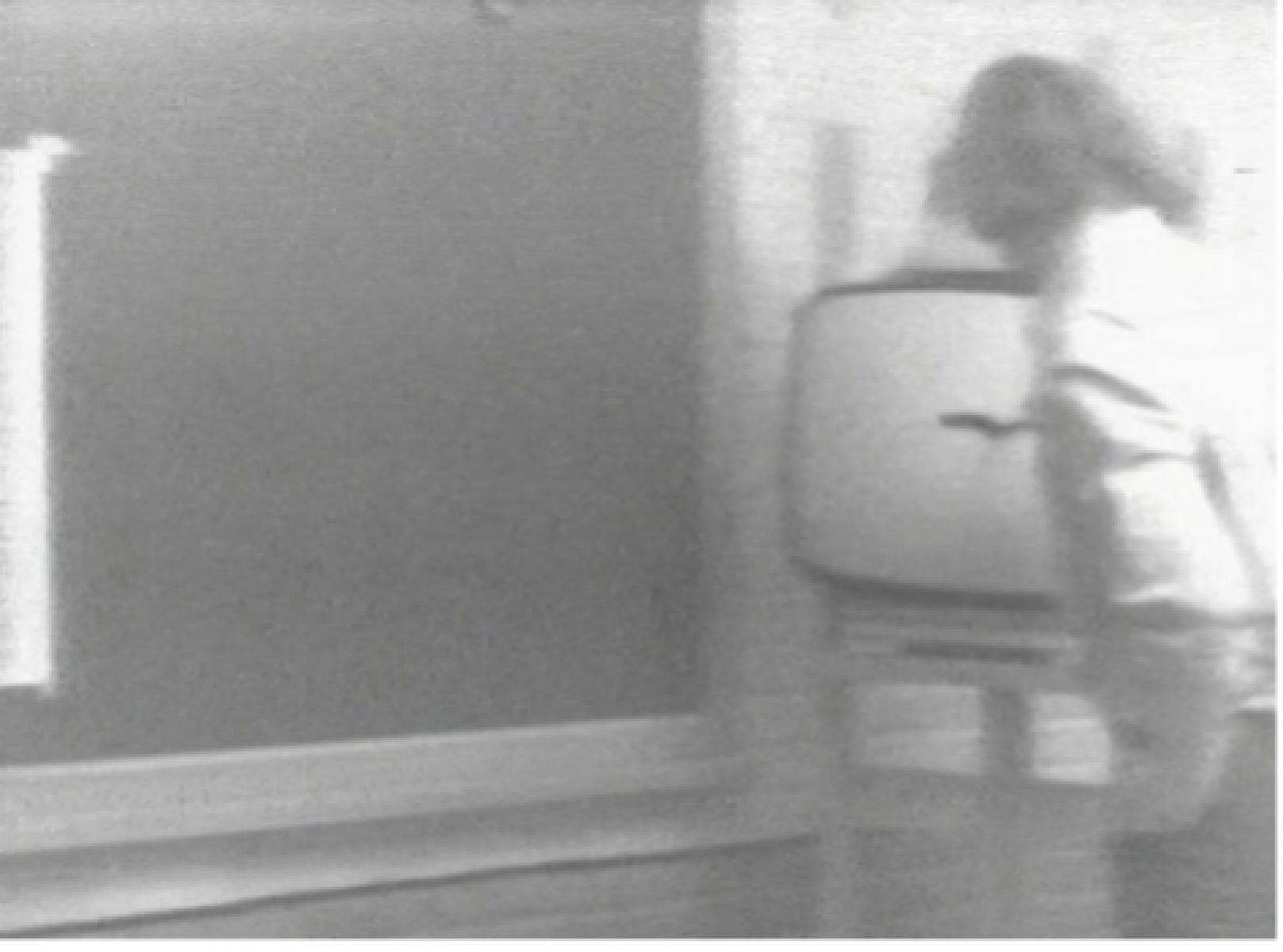
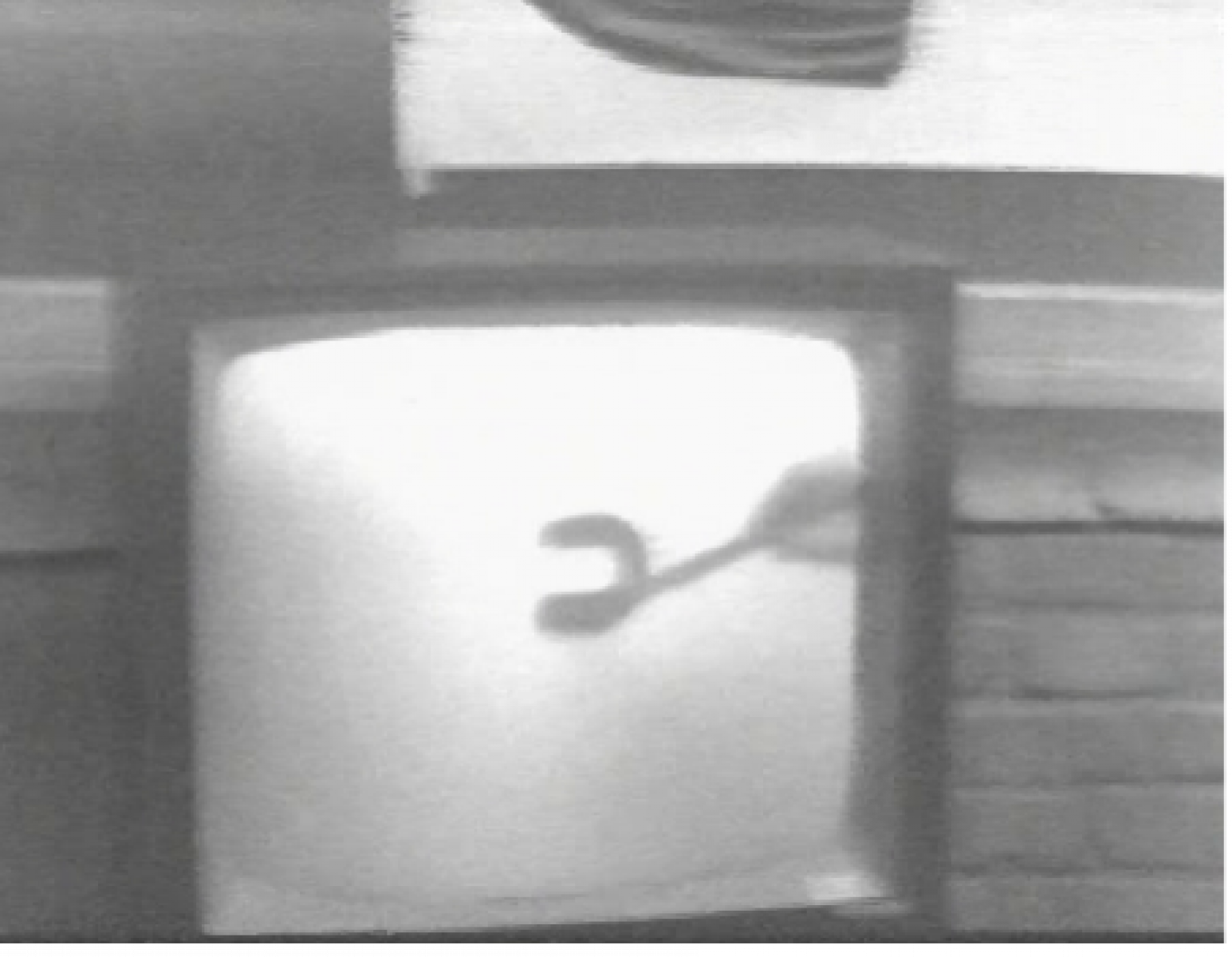
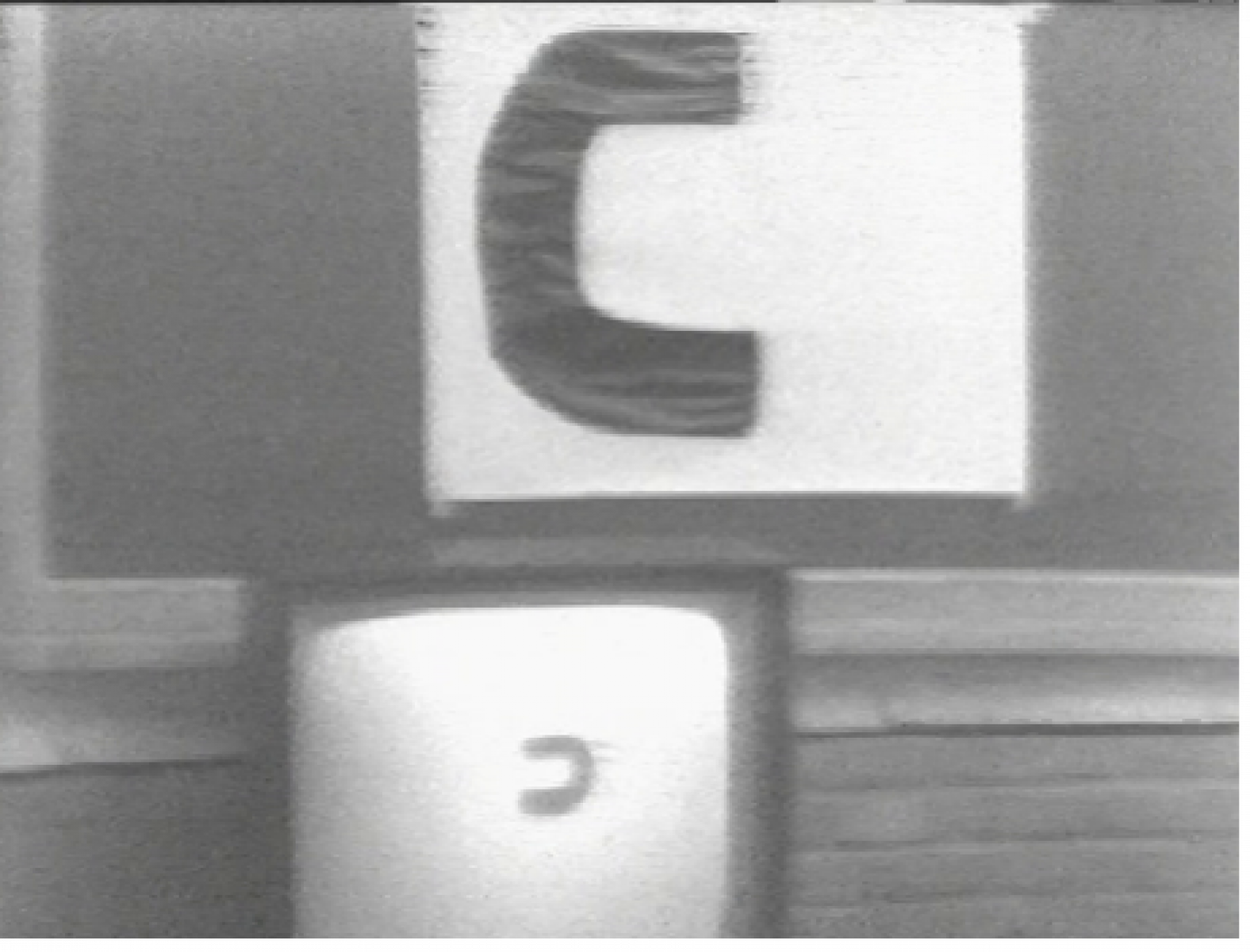
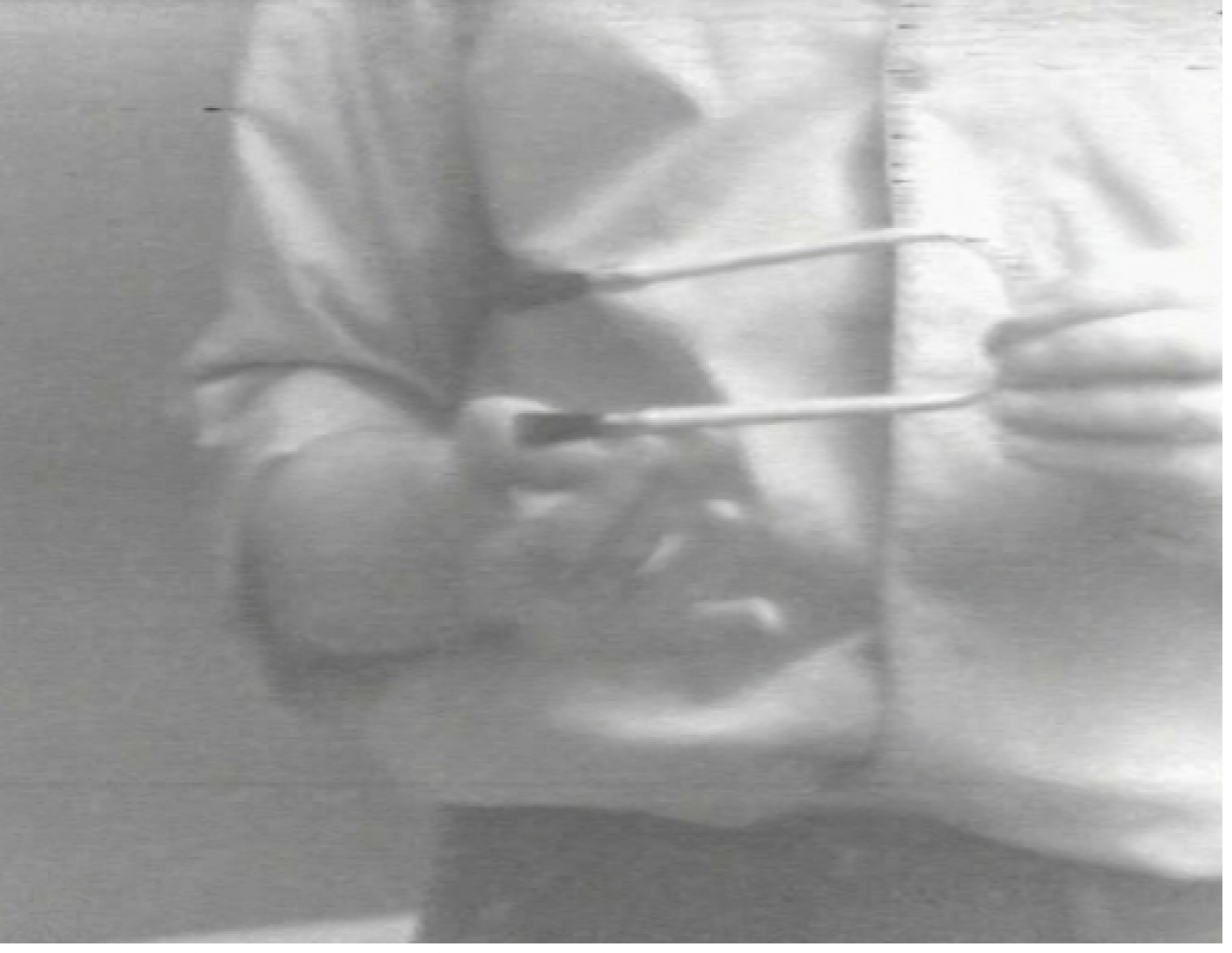
Further on in the tape, a bare brush demonstrates by its volume the connection between the void and the full, represented by two painted shapes that are in turn the sides (four lines) and vertices (four points) of a square. Yet another brush, this one with two heads that give it a T shape, is the result of the combination of a horizontal rectangle painted ‘on the board’ and a vertical line drawn on the monitor screen.
On the occasion of the group exhibition Aspects of contemporary art in Belgium at the ICC (predecessor of the M HKA) in Antwerp in July 1974, curator Francis Smets presented Duchateau’s approach in the following terms: ‘Any pictorial space can gain interest, if only as a result of the pictorial activities that take place there. Thus an essentially arbitrary act (painting) can become, by symmetrical consequences, essentially rational.’ 2
In Relations, Duchateau seized on the specific qualities of video, such as the immediacy offered by the closed circuit device, to demonstrate the rational processes that underlay his work. Painting is revealed through a dialogue between the brush-object and the line that migrates from one pictorial space to another. The sheet of paper, the monitor screen and the video image are all spaces activated by the painter through gesture.
In La peinture moderne, Lennep also presented the material aspects of pictorial representation. Lennep is an art historian, a multidisciplinary artist and a pioneer of video art who made his first videos as part of the Cercle d’Art Prospectif, which he founded in 1972. CAP is an association of artists (among them Jacques Louis Nyst, Pierre Courtois, Jacques Lizène and Jean-Pierre Ransonnet) who explored the concept of ‘relationship’. Their work integrated drawings, paintings, photos, texts and objects, all techniques which, once assembled, prompted a multiplicity of readings.
In his work, Lennep constantly reinterpreted art, its history and its conventions. In the early 1970s, he produced photographic self-portraits in which he embodied the subjects of famous works such as Caravaggio’s Bacchus or Raphael’s Donna Velata. 3 At the same time, he produced his ‘Tableaux-textes’, a series of conceptual works that combined antique gilded wooden frames with short descriptions of masterpieces written in pencil on a blank canvas. In these works, text acted as an intermediary, its reading leading to the symbolic realisation of the painting. 4 And the choice of the frame facilitated the rapprochement between the text and the tradition of easel painting, of which it was an essential component.
Between 1974 and 1975, Lennep produced a series of three video sketches on the theme of painting and, more specifically, the canvas as a figurative object. The first, Vive la peinture!, shows a still shot of a flowery wallpaper that the artist described as a tapestry or ‘old painting’. Filmed in Sprimont at the home of Danièle and Jacques Louis Nyst with the technical support of the Continental Studio (ICC, Antwerp), this video lasted only a few seconds and ended with an exclamation by the artist: ‘Vive la peinture!’ The subtitle of the work, ‘La peinture ancienne’, can be associated with 17th century painting, in particular by Dutch artists who back then recurrently integrated the motif of tapestry into their paintings. 5
The next sketch, La peinture moderne, featured the artist in an ungarnished room that suggests the space of a studio. Lennep imitates the act of painting while whistling cheerfully. Equipped with the traditional attributes of a painter (palette, brush, canvas and easel), he performs the codified gestures of an artist in search of inspiration, looking at a subject outside the frame.
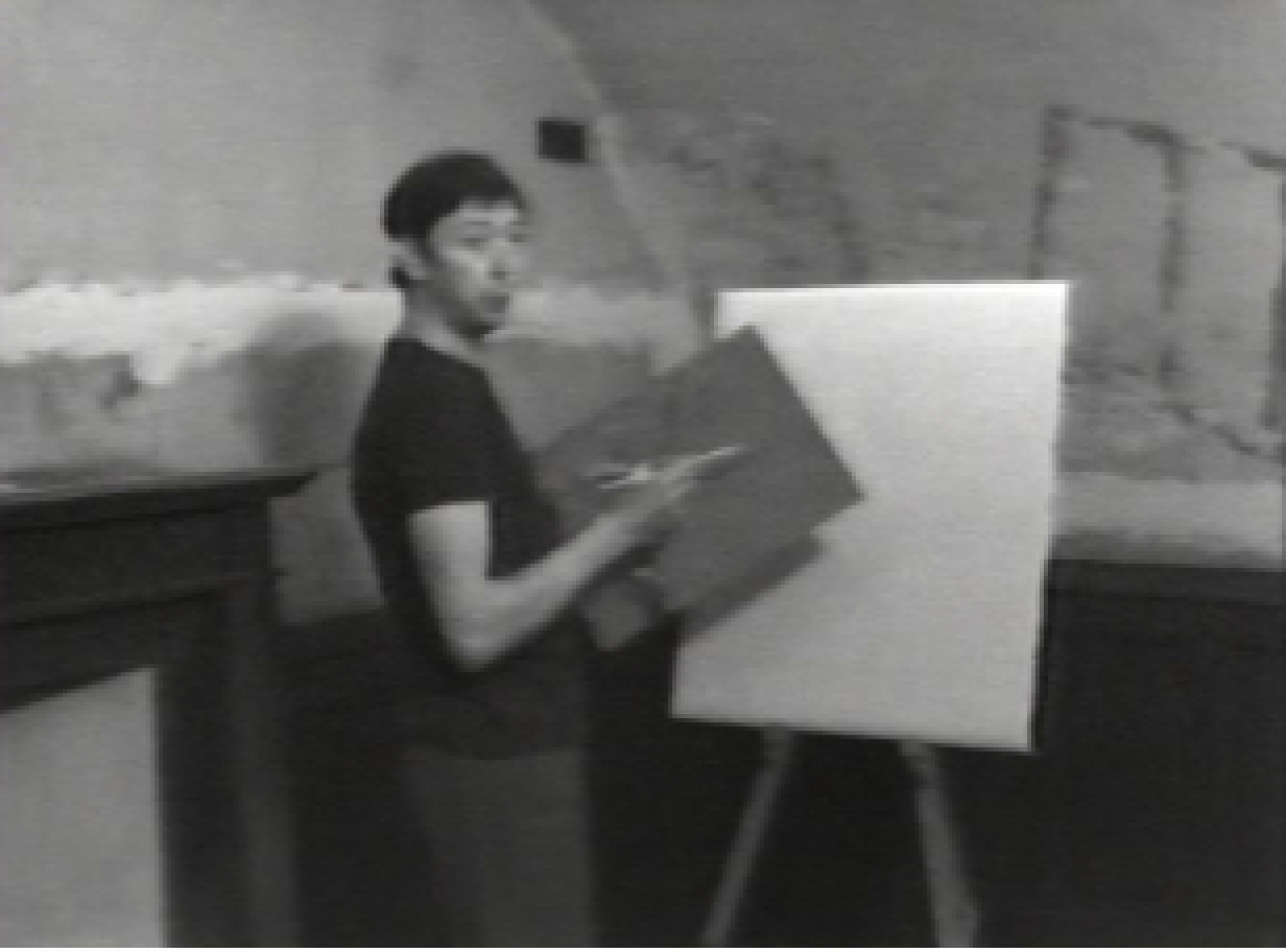
As he pretends to paint (his palette in fact has no colour), canvas, stretcher and easel disappear one by one from the screen. As this symbolic and physical deconstruction of the painting-object takes place, an arm enters the field from the right and paints the semi-transparent surface of a plexiglas window in front of the camera lens in white. This sudden appearance creates an opposition between the background, where the painting does not take place, and the foreground, where the process (painting) materialises on the glass, progressively covering the entire visual field. The glass takes on the function of a threshold or border separating the space of the representation from the real space in which the viewer stands. At the same time, it underlines the existence of this other frame, the television monitor that broadcasts the video.
Finally, in the third sketch, Le tableau, we find Lennep, this time in his capacity as an art historian, presenting a zany presentation to the camera. In a playful tone, inducing a certain complicity with the viewer, he begins by describing the format of the work: ‘It is rectangular but with rounded corners. It is protected by a slightly curved glass. Length: about fifty cm. Height: about 40 cm. In general.’ 6
He then introduces the subject of the painting, a staring figure slumped in a seat, and the light source that illuminates it. We understand that the painting, which at first sight seemed invisible, is none other than a television set. The seriousness of the presentation is questioned as we become aware of the deception. The addressee of the discourse identifies with the subject of the ‘tableau’ described by Lennep. The boundaries between reality and representation shift. The viewer is no longer sitting in front of the image, but is introduced into it or, better still, is absorbed by it, trapped behind the curved glass of the television set.
Another Belgian artist who explored this connection between the painting and the video monitor is Leo Copers. As a conceptual artist, Copers produced numerous sculptures, performances and installations that link the world of the symbolic with a critical reflection on art and the museum institution. From the sixties onwards, he set out to demystify art. He constantly staged situations that deal with questions of originality, authenticity and authorship. Thus, through a double game that combined homage and criticism, he appropriated the works of famous artists such as Rodin, Van Gogh, Magritte and Marinetti.
Appropriation is a form of expression with a long tradition in art history. In the twentieth century, it was more widely associated with the practice of the ready-made developed by Marcel Duchamp and, subsequently, with the conceptual art movement. It is characterised by the recovery of objects or works to which a new and often critical meaning is attributed.
The multimedia installation Mona Lisa, Mona Leo is a remarkable example of this practice of appropriation. The work consists of two parts, each of which features Leonardo Da Vinci’s Mona Lisa. The first part is a replica of La Gioconda. Its title, ‘Studie naar meesters’, refers more generally to the many masters who have studied this emblematic figure. 7 In turn, Copers takes the Mona Lisa and hijacks it by adding a device containing water to the back of the painting. Copers floods her face with tears, giving it a more mystical character. In an interview with the argos team in 2018, the artist explains: 8
The Mona Lisa is known for her mysterious smile. That made it very evident and that smile is so important: it’s almost the Virgin Mary if you look at it that way. We all know that miracles happen: that Mary can appear, that a statue of Christ starts bleeding or a statue of a saint weeps. So as a contrast to that eternal mysterious smile, I might as well add a new mystery too. Having some kind of miracle happen, and smile and weep, of course.
Opposite the painting, a monitor shows a looped long take entitled ‘Mona Leo’, featuring a self-portrait of Copers as La Gioconda. Copers stands in front of a painted background that reproduces the landscape in the Da Vinci painting. He remains in a pose, motionless and serious, for what seems an infinitely long time, as if suspended. The viewer comes to doubt the animated nature of the image. This uncertainty culminates in the outburst, every ten minutes, of a sonorous and demented laugh that marks the end of the sequence. Intrigued, the viewer is tempted to concentrate more on the video and can then intermittently perceive the blinking of Copers’ eyes, which reintroduces movement into the image.
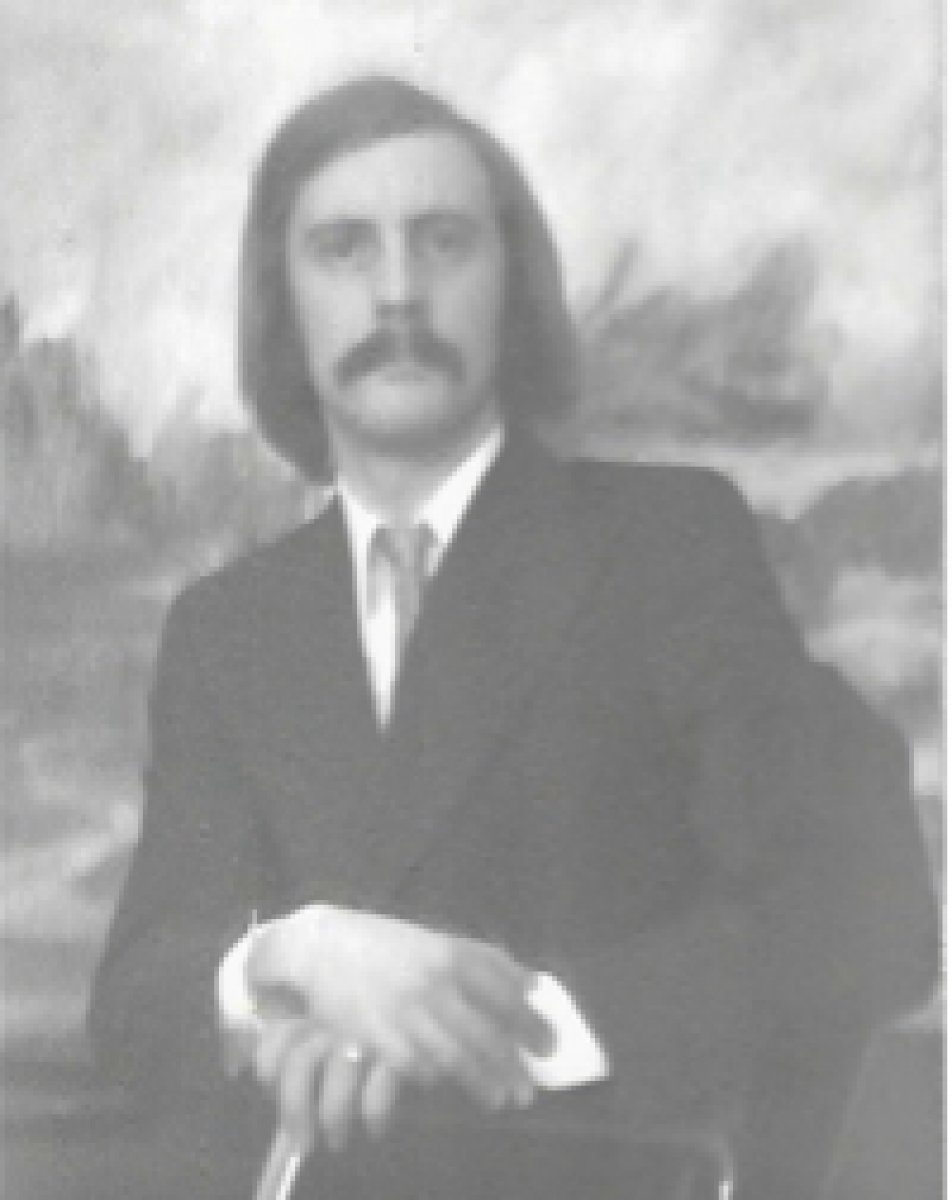
This installation was presented in 1990 at the Centraal Museum in Utrecht as part of a retrospective of the artist’s sculptures. It was placed alongside historical works from the museum’s permanent collection, interacting with other masters, other paintings, from the same period as the Mona Lisa. In 1993 Mona Lisa, Mona Leo was exhibited at the M HKA, on the occasion of Retrospective of Belgian Video Installations. Here the monitor was installed vertically, a reversal that gave the ‘box’ a sculptural character and at the same time evoked the classic portrait format. Once again, the monitor and the painting faced each other, Mona Leo and Mona Lisa looking each other straight in the eye. The simultaneous presence of these two portraits created a multitude of tensions: tears / laughter, seriousness / smile, stillness / movement, female / male. Finally, this confrontation took on a temporal character. As mentioned above, Copers referred to his predecessors or masters, placing a contemporary work in a long history of the image.
The works analysed in this article are built around a dialogue between painting and video, which represents tradition as well novelty. Each with its own specificities, these videos stage or exhibit an ‘other’ image attached to the tradition of painting (ancient, modern, fundamental). The use of the video medium allowed Duchateau to dramatize the process of image making that underlay his entire approach. With Lennep, the painting as a figurative object was thematized and put in relation with the new ‘limits’ of the video frame. Finally, with Copers, the canons of art history are revisited through the medium of video.
The dialogue between these two media took on a playful character. Visual gags, games of association, perversion of meaning, surprise effects and a casual attitude provoked a comic trait that challenged viewers and implied an interpretative reaction on their part. The object of the farce was none other than art itself, which should not be taken too seriously.

Curators
Dagmar Dirkx, Niels Van Tomme
Research
Dagmar Dirkx, Sofie Ruysseveldt, Erien Withouck
Image research
Emma Vranken, Daniel De Decker
Text editing
Anthony Blampied, Dagmar Dirkx, Inge Coolsaet, Laurence Alary, Niels Van Tomme, Björn Gabriëls
Translations
Gorik de Henau (NL), Anne Lessebi (FR), Björn Gabriëls (EN)
Website Coordination
Emilie Legrand
Concept and graphic design
Studio Le Roy Cleeremans
Website
Waanz.in
Publisher
Niels Van Tomme / argos vzw
Archives
M HKA / ICC, New Reform Gallery / Roger D’Hondt, KMSKB, BOZAR, Art & Actualité, Jacques Charlier, Joëlle de La Casinière, Eric de Moffarts, Geneviève van Cauwenberge, argos, SONUMA
Bibliography
Johan Pas, Beeldenstorm in een spiegelzaal. Het ICC en de actuele kunst 1970—1990, Lannoo Campus, 2005, 300 p. Jean-Michel Botquin (dir.), Le jardin du paradoxe. Regards sur le cirque divers à Liège, Yellow Now / Côté Arts, 2018, 448 p.
Digitalisation
Onno Petersen, D/arch, CINEMATEK, VECTRACOM
argos thanks
Andrea Cinel, Anne-Marie Rona, ArtTouché, Chris Pype, Dominique Castronovo, Eric de Moffarts, Evi Bert, Guy Jungblut, Jean-Michel Botquin, Joanne Jaspart, Katarzyna Ruchel-Stockmans, Lastpost / Fabri3Q, Leen Bosch, Liesbeth Duvekot, Maryse Tastenhoye, Nadja Vilenne, Sandy Reynaerts, Veronique Cardon and all the artists, curators and researchers involved in the research project
This is argos
Amit Leblang, Anaïs Bonroy, Anne Leclercq, Dagmar Dirkx, Daria Szewczuk, Dušica Dražić, Eden Lamaizi, Femke De Valck, Francisco Correia, Guy Verbist, Hadrien Gerenton, Iakovos Sierifis, Indigo Deijmann, Inge Coolsaet, Isaac Moss, Jana Van Brussel, Jonas Beerts, Julie Van Houtte, Julia Wielgus, Katia Rossini, Katoucha Ngombe, Kevin Gallagher, Kianoosh Motallebi, Laurence Alary, Mar Badal, Maryam K Hedayat, Mélanie Musisi, Natalya Ivannikova, Niels Van Tomme, Rafael Pamplona, Riet Coosemans, Sander Moyson, Stijn Schiffeleers, Viktor Simonis, Yoko Theeuws
This is rile
Chloe Chignell, Sven Dehens
argos thanks the board
Johan Blomme, Katerina Gregos, Olivier Auvray, Suzanne Capiau, Tom Bonte
Partners
Cinema Nova, M HKA, CINEMATEK, VUB, KMSKB, Meemoo
Sponsors
WIth the support of Flanders State of the Art, Eidotech, VGC Vlaamse Gemeenschapscommissie, Vlaams Audiovisueel Fonds, Government of the Brussels Capital Region, Embassy of the Netherlands, Embassy of Slovenia, Instituto Italiano di Cultura
